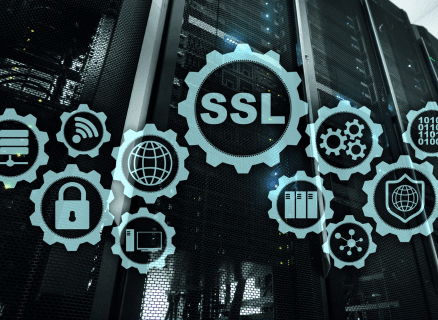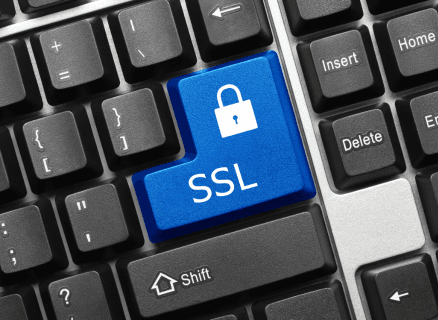Website security in 2024 is more than just a technical requirement—it's essential for business survival. SSL certificates play a crucial role in this security, but effectively managing them requires ongoing effort. Implementing SSL certificates is only the beginning. To ensure they continue protecting your business, SSL monitoring has become indispensable. Here’s why monitoring your SSL certificates is critical for maintaining a secure online presence and what steps you need to take to safeguard your business.
SSL Monitoring: The Foundation of Website Security in 2024
Nadiia Sidenko
2024-10-04

SSL Monitoring

The Importance of SSL Monitoring for Your Business
SSL certificates encrypt data transferred between your website and its users, but if those certificates expire or are misconfigured, they can lead to significant disruptions. Managing SSL certificates manually leaves businesses vulnerable to these risks. In fact, 35% of businesses failed to renew their certificates on time in 2024 due to manual tracking, and 80% of organizations experienced service outages due to expired SSL certificates, leading to financial losses and damage to customer trust.
When an SSL certificate expires, visitors to your site may be greeted with warnings from their browsers, which will deter them from continuing. This results not only in lost traffic but also in a damaged reputation. An effective SSL monitoring strategy helps avoid these issues by proactively managing certificates and keeping your website secure.
Key Benefits of SSL Monitoring
Implementing SSL monitoring offers several critical advantages that go beyond just keeping certificates valid:
- Prevention of Revenue Loss: Expired certificates can lead to costly downtime and abandoned transactions. With monitoring, you can avoid unexpected revenue drops by ensuring your site remains accessible and secure.
- Maintaining Customer Trust: Online security is closely tied to customer confidence. Regularly monitored SSL certificates reassure visitors that their personal and financial data are protected.
- Streamlined Certificate Management: Monitoring solutions centralize tracking for multiple SSL certificates, even across different domains. Automating alerts for renewals eliminates the risk of human error and makes managing SSL certificates simpler and more efficient.
Automation: The Key to SSL Management Success
As businesses move towards automated systems, the need for manual certificate management continues to decrease. Organizations that have adopted SSL monitoring tools in 2024 have reported significant improvements in managing their certificates. A recent study revealed that 60% of businesses now utilize automated SSL monitoring, with these companies experiencing 50% fewer SSL-related issues. Furthermore, websites with expired certificates saw an average 25% drop in traffic, further emphasizing the need for continuous monitoring.
By using automated monitoring systems, businesses gain several advantages. These systems track the SSL status of all certificates, provide timely alerts when expiration dates approach, and reduce the chances of costly downtime.
Best Practices for Effective SSL Monitoring
Implementing SSL monitoring requires following specific best practices to ensure your business reaps the full benefits of this essential security measure:
- Maintain a Certificate Inventory: Create and regularly update a detailed list of all SSL certificates used across your business. This inventory should include the domain name, expiration date, certificate authority, and the person responsible for managing each certificate.
- Set Multi-Stage Alerts: It’s important to receive reminders well in advance of a certificate’s expiration. Most businesses configure alerts at several key points:
- 90 days before expiration
- 60 days before expiration
- 30 days before expiration
- 7 days before expiration
- These notifications ensure you have ample time to renew certificates without causing any service disruptions.
- Automate Where Possible: Using SSL certificate management and expiration monitoring tools can automate renewal processes, reducing manual labor and minimizing the risk of expired certificates. Automation also frees up your team to focus on other critical tasks.
Managing SSL Certificates for Third-Party Services
In today’s interconnected digital ecosystem, websites often rely on third-party services, each with their own SSL certificates. Managing these certificates can be tricky, as businesses may not have full control over them. To address this challenge, it’s essential to implement a strategy that includes:
- Regular audits of third-party SSL certificates to ensure they are up to date.
- Clear communication with service providers regarding renewal schedules and certificate responsibilities.
- Documentation of SSL certificate details for each third-party integration, allowing you to stay informed about expiration dates and potential risks.
By taking these steps, you can prevent third-party certificate failures from impacting your website’s performance.
Measuring the Success of SSL Monitoring
To ensure your SSL monitoring efforts are effective, it’s essential to track certain performance metrics. Measuring the following key indicators will help you evaluate your system and make improvements where necessary:
- Time to Certificate Renewal: How long does it take to renew a certificate from the time the alert is received?
- Number of Expired Certificates: How often do certificates expire without being renewed in time?
- Response Time to Certificate Issues: How quickly does your team respond to SSL-related alerts or issues?
- Cost Savings from Downtime Prevention: Track the financial benefits of preventing service interruptions caused by expired certificates.
Monitoring these metrics will give you valuable insights into the effectiveness of your SSL management strategy and help optimize the process.
Future Trends in SSL Monitoring: What to Expect in 2025
As we look ahead to 2025, several trends in SSL monitoring and management are expected to shape the future of website security:
- Shorter Certificate Lifespans: With the shift toward shorter validity periods for SSL certificates, businesses will need to renew their certificates more frequently. This makes the adoption of automated renewal systems more important than ever.
- Integration with SIEM Systems: As security threats become more sophisticated, integrating SSL monitoring into Security Information and Event Management (SIEM) systems will become essential for identifying and responding to threats in real time.
- Greater Focus on Certificate Transparency: In 2025, we expect to see an increased emphasis on monitoring certificate transparency logs to detect any unauthorized certificates that may have been issued for your domains, providing an additional layer of security.
SSL monitoring is no longer just a technical task—it’s a critical aspect of maintaining your business’s security and ensuring that your website remains accessible and trusted by users. By adopting best practices such as automated monitoring, multi-stage alerts, and thorough audits, you can protect your business from the costly consequences of expired or misconfigured certificates.
The investment in SSL certificate tracking and monitoring systems is minimal when compared to the potential losses from service disruptions or security breaches. As threats evolve and SSL standards become stricter, continuous monitoring will be key to keeping your website secure. Start today by strengthening your SSL monitoring processes to ensure that your business remains safe and operational in 2024 and beyond.
SSL Monitoring
The Importance of SSL Monitoring for Your Business
Key Benefits of SSL Monitoring
Automation: The Key to SSL Management Success
Best Practices for Effective SSL Monitoring
Managing SSL Certificates for Third-Party Services
Measuring the Success of SSL Monitoring
Future Trends in SSL Monitoring: What to Expect in 2025